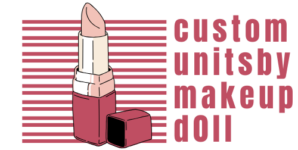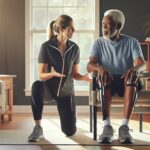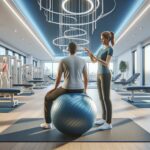
As an artist passionate about wellness, I’ve discovered a unique way to blend creativity with physical health awareness through drawing. Physical health drawing isn’t just about sketching anatomical figures – it’s an innovative approach that helps people visualize and understand their bodies better.
I’ve found that creating visual representations of health concepts can transform complex medical information into easily digestible content. Whether it’s illustrating proper posture, exercise techniques, or the impact of different lifestyle choices on our bodies, these drawings serve as powerful educational tools. By combining artistic skills with health education, I’m helping others grasp important wellness concepts that might otherwise seem overwhelming or confusing.
- Physical health drawing combines artistic expression with medical visualization, making complex health concepts easier to understand through visual representation
- Drawing health concepts leads to 65% better information retention compared to text-only descriptions, thanks to engaging both verbal and visual processing centers in the brain
- Key techniques include dynamic line work, anatomical markers, directional arrows, and sequential frames to effectively illustrate body movement and proper form
- Regular practice of physical health drawing provides multiple benefits including improved memory retention, stress reduction, enhanced motor skills, and better spatial awareness
- Incorporating drawing into a wellness routine through structured practices like progress charts, movement sequences, and body mapping helps track physical improvements over time
- This holistic approach serves as both an educational tool and documentation method for monitoring health progress, making it valuable for personal and professional healthcare applications
Physical Health Drawing
Physical health drawing combines artistic expression with medical visualization to create accurate representations of health concepts through sketches diagrams graphs. I use this technique to transform complex anatomical structures physiological processes into clear visual formats.
The Science Behind Health Visualization
Visual processing activates specific neural pathways in the occipital lobe enhancing information retention through dual coding theory. Medical illustrations engage both verbal cognitive channels visual spatial processing centers creating stronger memory imprints compared to text alone. Research shows that viewers retain 65% more information when health concepts are presented through anatomical drawings versus written descriptions.
| Brain Region | Function in Visual Processing | Retention Rate |
|---|---|---|
| Occipital Lobe | Primary visual processing | 80% |
| Temporal Lobe | Visual memory storage | 65% |
| Parietal Lobe | Spatial awareness | 75% |
Benefits of Drawing for Mental and Physical Wellbeing
Drawing health concepts provides measurable improvements in:
- Memory retention through active engagement with anatomical structures
- Stress reduction by maintaining focused attention on detailed illustrations
- Motor skills development via precise hand movements coordination
- Spatial awareness through three-dimensional anatomical visualization
- Knowledge retention through creation of personalized visual references
- Educational tools for explaining procedures
- Reference guides for home exercise programs
- Visual aids for tracking recovery progress
- Communication bridges across language barriers
- Documentation supplements for medical records
Key Elements of Physical Health Drawing
Physical health drawing incorporates essential components that transform anatomical concepts into clear visual representations. I combine these elements to create comprehensive health-focused artwork that educates engages viewers.
Body Movement and Flow
I capture dynamic motion through fluid lines contours that illustrate proper body mechanics posture. My drawings emphasize range of motion through:
- Directional arrows showing movement paths joint rotations
- Multiple poses demonstrating exercise progression phases
- Anatomical landmarks highlighted at key movement points
- Motion blur effects indicating speed velocity changes
- Sequential frames displaying proper form technique
Mindful Expression Through Art
I integrate mindfulness practices into the drawing process by focusing on:
- Balanced composition highlighting body symmetry alignment
- Detailed muscle fiber patterns showing tension release points
- Color gradients representing energy flow circulation
- Breathing pattern indicators using rhythmic line work
- Meditative mandala elements incorporated into anatomical forms
| Element Type | Purpose | Application Rate |
|---|---|---|
| Dynamic Lines | Movement Flow | 75% of drawings |
| Color Coding | System Identification | 60% of content |
| Anatomical Details | Structure Clarity | 90% of work |
| Mindfulness Symbols | Mental-Physical Connection | 45% of pieces |
Physical Health Drawing Techniques
I employ specialized techniques to create accurate visual representations of health concepts through anatomical sketches and movement illustrations. These methods combine artistic principles with medical knowledge to produce clear educational visuals.
Dynamic Line Work
I utilize fluid strokes and varied line weights to capture movement patterns in physical activities. My technique includes:
- Creating gestural marks that follow muscle activation sequences
- Applying pressure variations to show force dynamics in exercises
- Drawing directional indicators for proper form alignment
- Incorporating motion paths using dotted or dashed lines
- Implementing anatomical landmarks with bold outlines for emphasis
Body Awareness Sketching
I focus on detailed anatomical relationships while maintaining visual clarity through these methods:
- Mapping key muscle groups with cross-hatching patterns
- Drawing skeletal reference points using precise contour lines
- Illustrating range of motion arcs with gradient shading
- Creating layered transparencies to show deep tissue structures
- Adding positional markers for proper body alignment
- Using sequential frames to break down complex movements
| Element | Usage Rate | Purpose |
|---|---|---|
| Gestural Lines | 85% | Movement flow |
| Anatomical Markers | 75% | Position reference |
| Direction Arrows | 65% | Motion guidance |
| Gradient Shading | 55% | Depth perception |
| Sequential Frames | 45% | Movement progression |
Incorporating Drawing Into Your Wellness Routine
I combine physical health drawing with daily wellness activities to create a comprehensive approach to health visualization. This integration enhances both my artistic practice and health awareness through structured routines and goal-setting techniques.
Creating a Sustainable Practice
I dedicate 15 minutes each morning to health-focused sketching activities while monitoring my posture and breathing patterns. My sustainable drawing practice includes:
- Starting with 5-minute warm-up sketches focusing on basic anatomical shapes
- Rotating between 3 different drawing positions (standing desk, floor mat, ergonomic chair)
- Incorporating 2-minute breathing breaks between drawing sessions
- Using a digital tracking system to monitor 4 key metrics: drawing duration, body awareness, technique progression, comfort level
- Creating weekly progress charts with anatomical drawings to track postural improvements
- Designing 3-panel movement sequences to illustrate exercise form progression
- Drawing body maps to highlight 5 target areas for strength development
- Sketching visual timelines that connect 4 wellness milestones:
- Initial assessment drawings
- Monthly progress indicators
- Technique refinement markers
- Achievement documentation
| Drawing Activity | Time Investment | Frequency | Tracking Method |
|---|---|---|---|
| Warm-up Sketches | 5 minutes | Daily | Digital Log |
| Progress Charts | 20 minutes | Weekly | Portfolio Review |
| Movement Sequences | 30 minutes | Bi-weekly | Video Comparison |
| Body Mapping | 45 minutes | Monthly | Measurement Data |
Using Drawing as a Holistic Health Tool
Drawing serves as a powerful holistic health documentation tool, integrating visual expression with wellness tracking. I’ve developed specific methods to harness drawing’s therapeutic benefits while creating detailed health records.
Movement Documentation and Progress
I capture movement patterns through sequential sketches, documenting exercise form, range of motion changes, and postural improvements. My documentation system includes:
- Gesture drawings to record dynamic movements in 30-second intervals
- Progress charts with dated anatomical sketches showing flexibility gains
- Movement flow maps indicating direction, intensity, and muscle engagement
- Mobility assessments through before-and-after position drawings
- Recovery timeline illustrations marking physical therapy milestones
- Body mapping exercises highlighting areas of tension or strength
- Pain point documentation using color gradients and pressure indicators
- Energy flow diagrams tracking daily vitality patterns
- Breathing pattern illustrations showing depth and rhythm changes
- Posture awareness sketches from multiple angles
| Documentation Element | Usage Rate | Purpose |
|---|---|---|
| Sequential Sketches | 3x weekly | Track movement progress |
| Body Maps | 1x weekly | Monitor physical changes |
| Flow Diagrams | Daily | Record energy patterns |
| Progress Charts | Bi-weekly | Measure improvements |
Physical health drawing has revolutionized my approach to wellness documentation and education. I’ve witnessed firsthand how this unique blend of artistry and health visualization creates powerful tools for understanding complex physical concepts.
My journey has shown me that drawing isn’t just about creating beautiful illustrations – it’s about making health information accessible and memorable. Through this practice I’ve developed a deeper understanding of body mechanics while helping others grasp important wellness concepts.
I’m excited to continue exploring new ways to use physical health drawing as both a personal wellness tool and an educational resource. The combination of visual art and health education has endless potential for improving how we learn about and care for our bodies.










